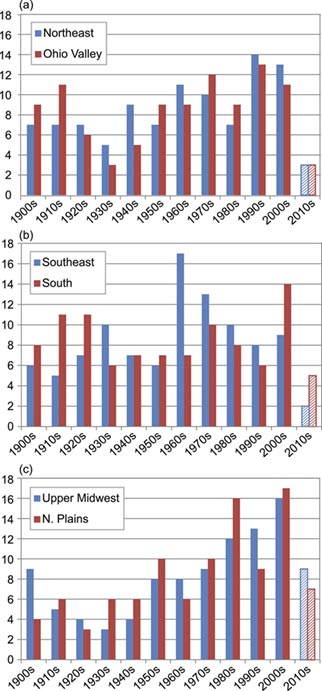
© 2014 American Meteorological Society
Severe snowstorms can have significant impacts on human safety and economic activity. As global temperatures increase, it is important to understand how severe winter storms may be changing now and may change in the future. In a new Journal of Hydrometeorology article, Jay Lawrimore, Tom Karl, and Mike Squires from NOAA’s National Centers for Environmental Information, David Robinson from Rutgers University, and Ken Kunkel of CICS-NC have identified and analyzed the top 100 severe snowstorms in each of six eastern U.S. climate regions. They investigated how regional differences, year-to-year variability in temperature and precipitation, and El Niño/La Niña conditions affect the likelihood and timing of these storms. Among their findings: major snowfall events have been more frequent in recent decades in the northern regions; with rising temperatures, the likelihood of late-season major snowstorms is decreasing in warmer regions; ENSO conditions have a significant influence on the likelihood of having two or more major snowstorms in most regions.


